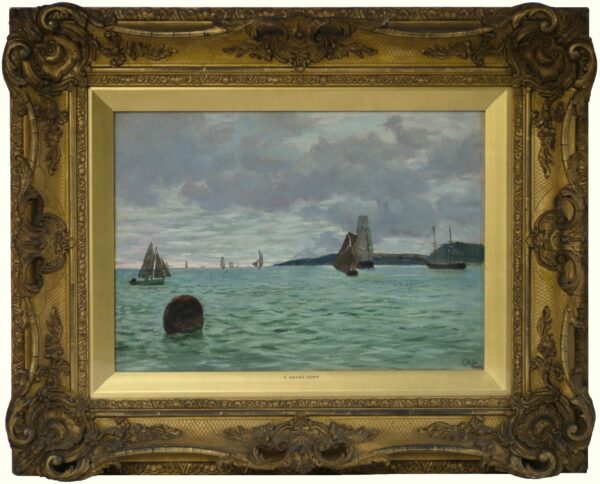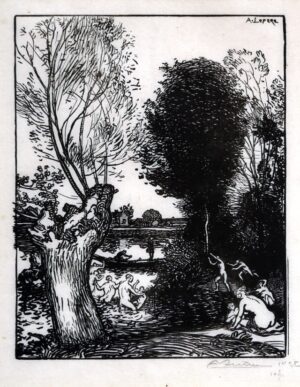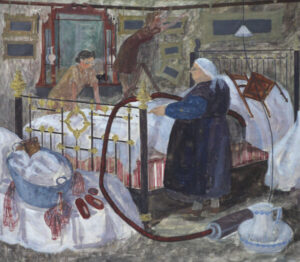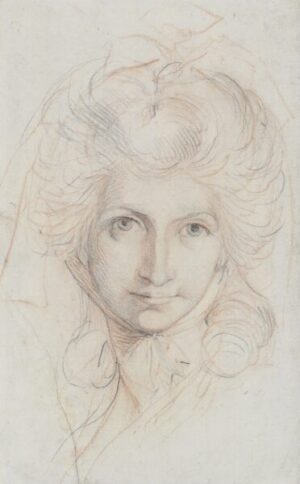Charles Napier Hemy – Shipping Off The Coast
Out of stock
Signed with initials C.N.H. and dated 1884. (bottom right). Oil on paper laid onto board. Displayed in its original Victorian gilded composite frame, with the artists name: C Napier Hemy, on the slip. Framers label for (M?) Davis. 1, 2 & 3 Livery St. Birmingham. Provenance: Estate of Joseph George Beddoes.
Additional information
| Image | 13 1/2 in x 18 in. (34.3 cm x 45.7 cm.) |
|---|---|
| Frame or Mount | Frame: 23 3/8 in x 29 in. (59.3 cm x 73.7 cm.) |
Brand
Hemy, Charles Napier (1841-1917)
Born on 24 May 1841, Newcastle upon Tyne. In 1850 with his parents, who were emigrating due to financial difficulty, Hemy set sail on the Madawaska to Australia. This journey, and their return in 1852, were to be recalled for the rest of his life as having started his love affair with the sea: 'It was imprinted on my mind, and I never forgot it'. In 1852 Hemy enrolled in Newcastle's Government School of Design under the tutelage of William Bell Scott. An additional encouragement was the work of an uncle, Isaac Henzell, whose influence is noted in some marine paintings. The artist was a life-long and devout Catholic, and for a time in his youth joined as a Brother to French Dominicans at Lyons. With no settled vocation, from 1862 his life as an artist became his focus. In 1863 he went to study with the Belgian painter Baron Henri Leys, and attended the Antwerp Academy. On the death of Leys he returned to England, where in 1866 he married. From 1869-80 Hemy lived in London, working from a gallery studio in Fulham close to the home of Burne-Jones, the pre-Raphaelite painter, and in the William Morris workshop. The influence of Whistler was strong, and his waterside (Thames) paintings illustrate this. However, by the 1870s Hemy was looking at other marine locations, and The Harbour of St Ives (1871) is one example amongst others of seaside paintings around Britain. JJ Tissot, a friend of Whistler, was to become a major influence on the more painterly style that Hemy developed during the 1870s when his summers were spent in the fishing ports of Cornwall and Devon. By 1880 he had chosen Falmouth for his future home, and this he had built to his own design and specification. His first wife, Mary, died in that year, and with his second wife, Amy Mary Freeman (whom he married in 1881), he was to have ten children. The artist visited Newlyn from his home in Falmouth with regularity, and he also exhibited at the Opening Exhibition of Passmore Edwards Art Gallery, Newlyn in 1895. His special friends were his Falmouth fellow artists Henry Scott TUKE and Frank BRANGWYN, another lover of the sea, who would live on to write his memorial appreciation (Fine Art Society Exhibition 1918). He died on 30 September, 1917 in Falmouth, age 76.
This biography is from CAI, Cornwall artist index.



